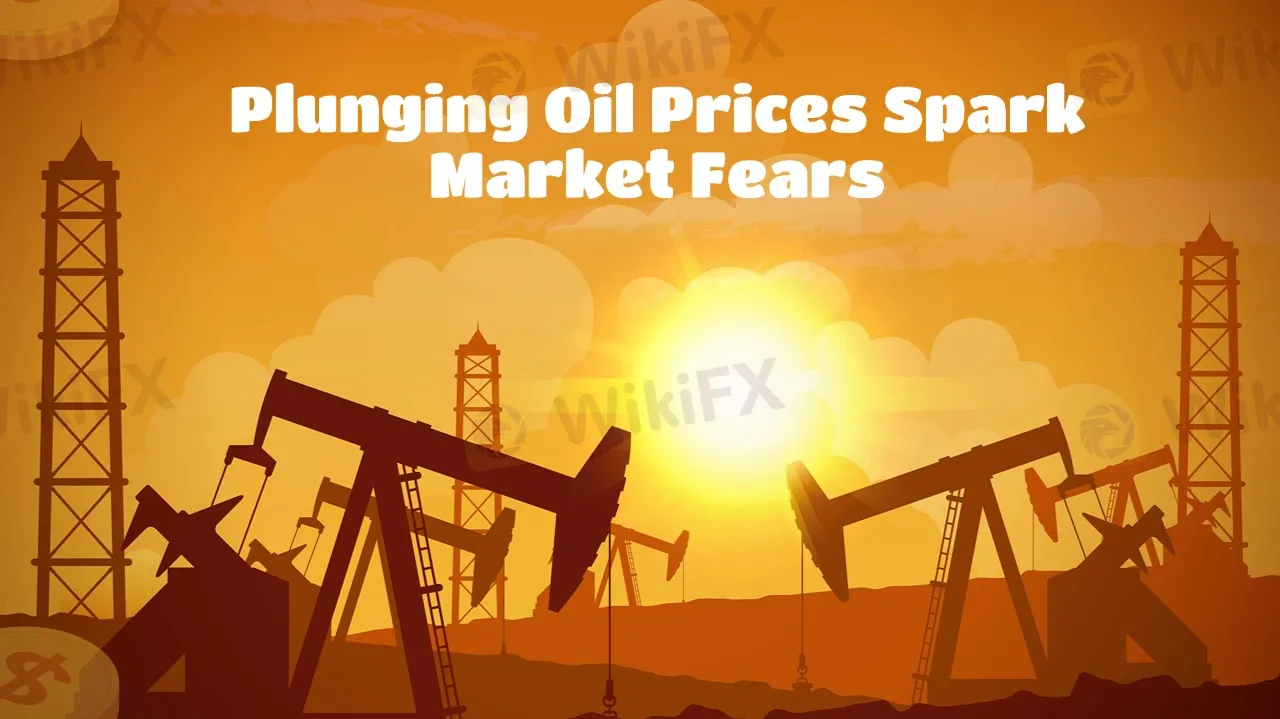简体中文
繁體中文
English
Pусский
日本語
ภาษาไทย
Tiếng Việt
Bahasa Indonesia
Español
हिन्दी
Filippiiniläinen
Français
Deutsch
Português
Türkçe
한국어
العربية
Plunging Oil Prices Spark Market Fears
Abstract:International oil prices have declined for two consecutive days, mainly due to the impact of U.S. tariff hikes, which have intensified market concerns over a global economic slowdown.

OPEC+ plans to increase production starting in April, further adding to market supply pressure and weighing on oil prices.
Recently, U.S. President Donald Trump announced tariff increases on products from Canada, Mexico, and several Asian countries, stating that trade pressure would not be eased. This policy has triggered market panic, prompting investors to reassess the global economic outlook and anticipate a decline in energy demand.
Additionally, investors are worried that the U.S. economy may be entering a “transition period” or even facing a recession, leading to heightened risk aversion and the sell-off of crude oil and other risk assets. Meanwhile, OPEC+s decision to increase production has created additional pressure on the supply side. Although Russia has hinted at possible adjustments, short-term supply growth still poses a challenge to oil prices.
In the short term, oil prices remain under downward pressure, but the market will closely monitor OPEC and IEA‘s monthly reports, U.S. inventory data, and the Federal Reserve’s monetary policy stance. If demand declines more than expected or crude oil inventories continue to rise, prices may fall further.
However, if the Federal Reserve adopts a more dovish stance, market sentiment may recover to some extent. Overall, given the economic slowdown, rising risk aversion, and OPEC+ production increases, the outlook for oil prices remains uncertain.
Disclaimer:
The views in this article only represent the author's personal views, and do not constitute investment advice on this platform. This platform does not guarantee the accuracy, completeness and timeliness of the information in the article, and will not be liable for any loss caused by the use of or reliance on the information in the article.
Read more

Valid Reasons to Avoid SevenStar FX
SevenStar FX is a low-rated broker. When you search online, you will find tons of overly positive reviews about this broker. Strangely, there is almost no negative feedback anywhere, which is unusual. It makes us wonder: how can a forex broker with no proper regulation have such a perfect reputation? In this article we exposed the red flags of this broker.

Top 5 Forex Risk Management Errors Companies Usually Commit
Think your company’s forex strategy is under control? Think again. Even large organizations fall prey to hidden currency risks that can quietly eat into their margins. From overlooked exposures to outdated strategies, here are the top five forex risk management errors businesses make—and how to avoid them.

Top 5 Unnoticed Risks of Fusion Trade You Shouldn't Ignore
Fusion Trade is a broker based in the Netherlands that you should avoid. If you're not careful, you could lose your money in a scam run by this fake broker. This article will expose the scam of the broker and make you Fraud Alert. Read this article and stay away from Fusion Trade .

Eyeing Significant Returns from Forex Investments? Be Updated with These Charts
Confused about how to track your forex profits? The secret lies in the charts—and we’re here to decode them for you.
WikiFX Broker
Latest News
U.S. doubles down on Aug. 1 tariffs deadline as EU battles for a deal
Buffett and Thorp’s Secret Options Strategies
Sharing Trading Mistakes and Growth
Trading Market Profile: A Clear and Practical Guide
Eyeing Significant Returns from Forex Investments? Be Updated with These Charts
CNBC Daily Open: The silver lining of positive earnings could be too blinding
CNBC Daily Open: Solid earnings beats might mask tariff volatility these two weeks
Mastering Deriv Trading: Strategies and Insights for Successful Deriv Traders
Brexit made businesses abandon the UK. Trump's hefty EU tariffs could bring them back
Jeep-maker Stellantis expects first-half net loss of $2.7 billion as tariffs bite
Currency Calculator


